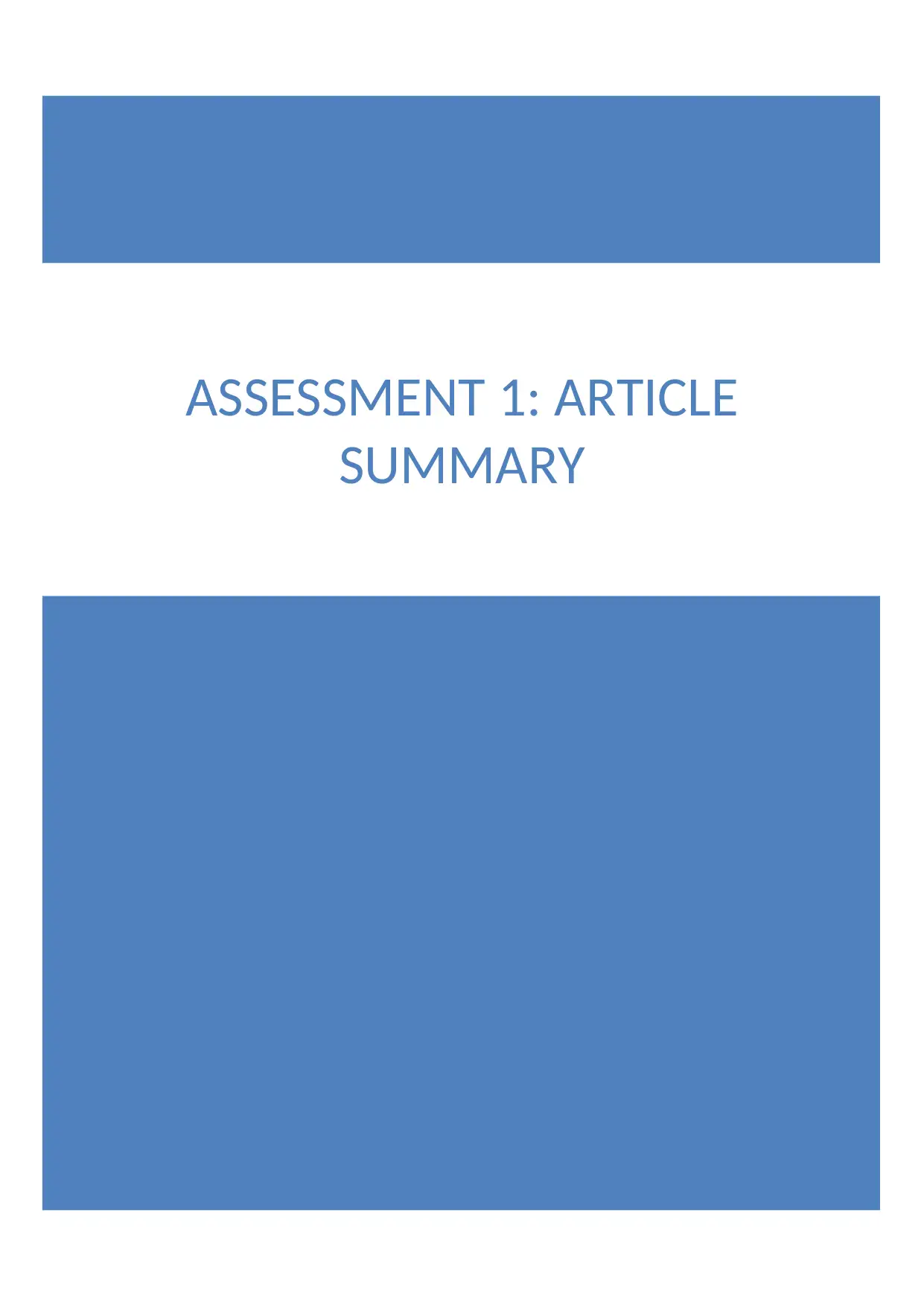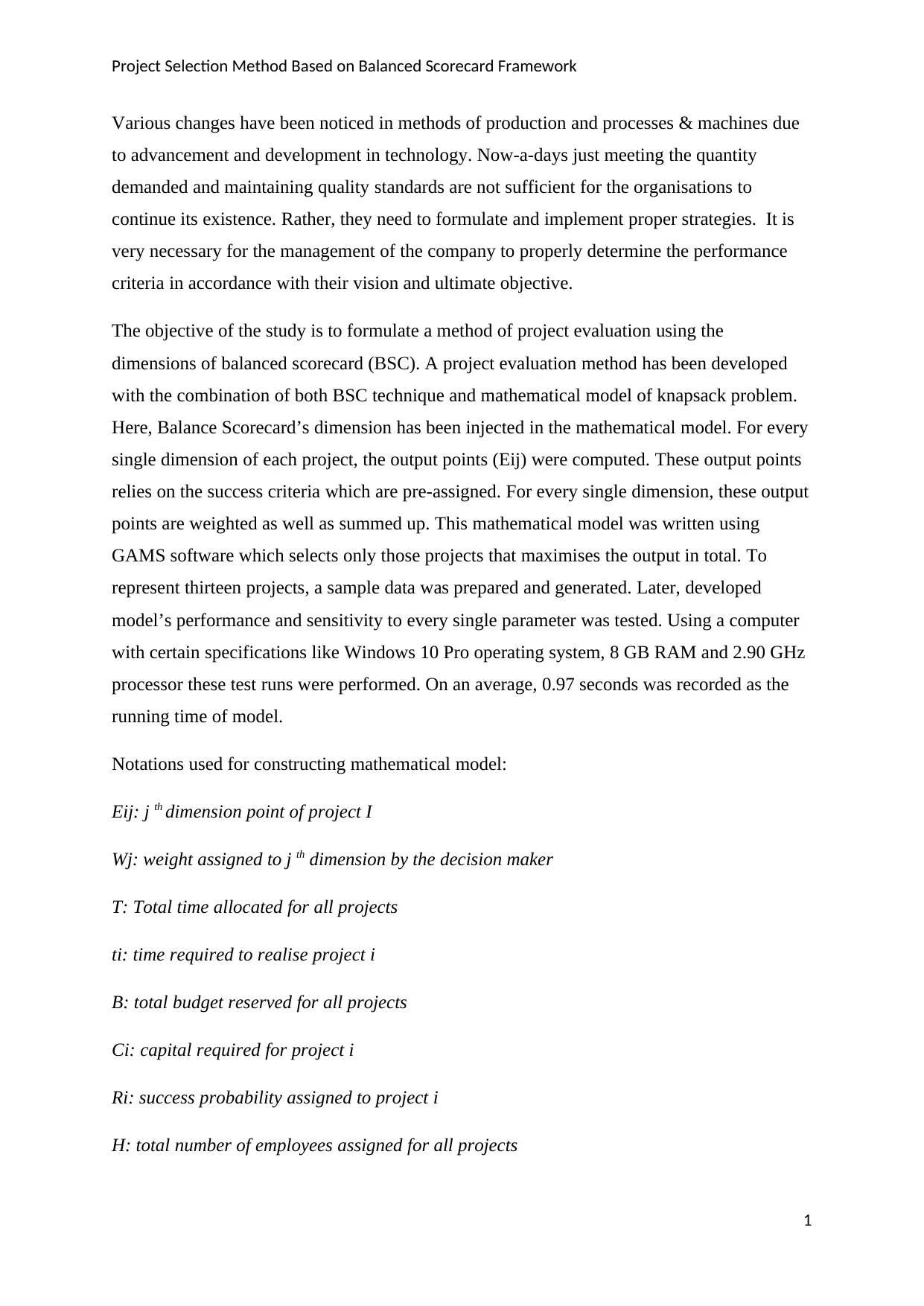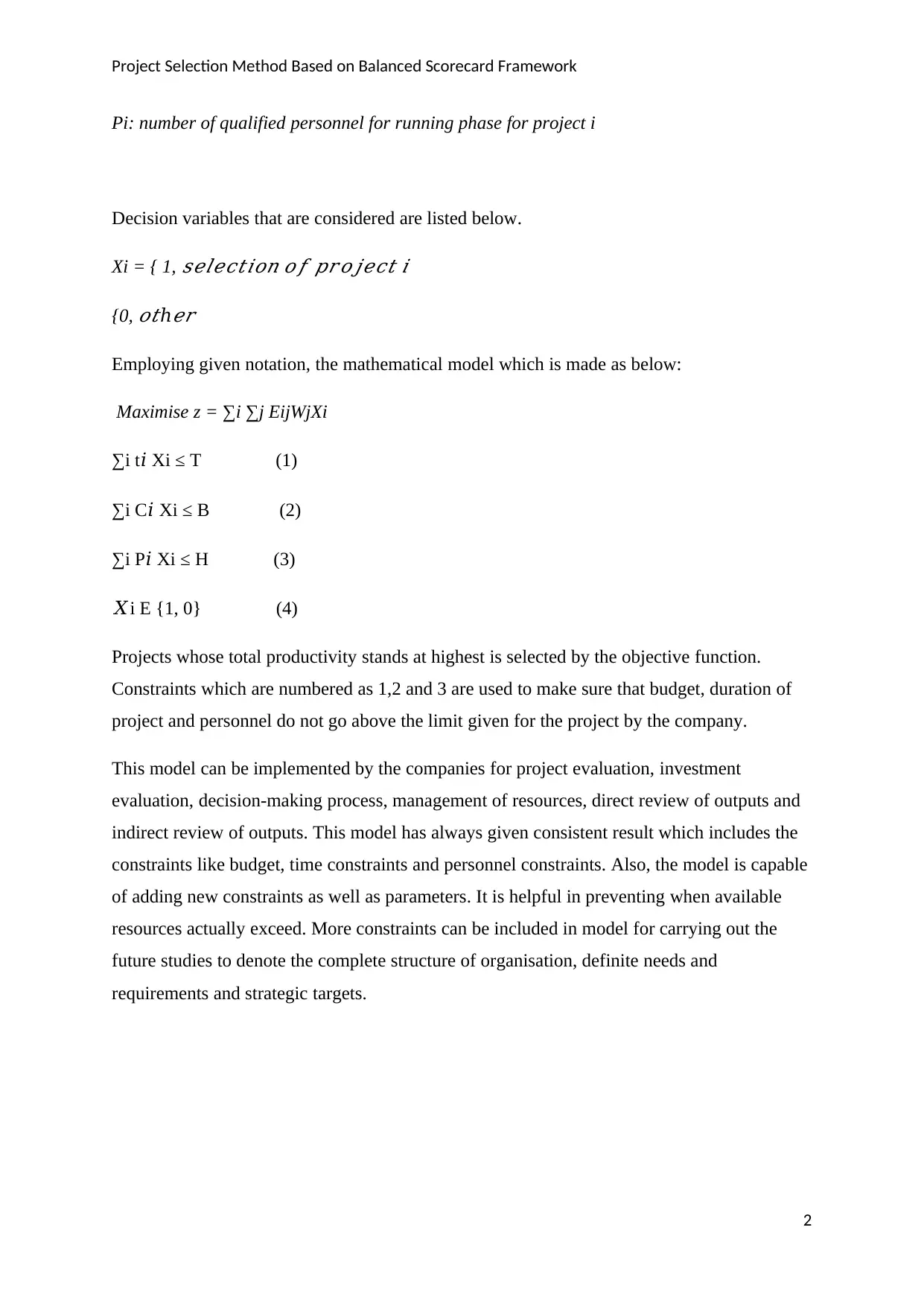SBM1203: Project Selection Method Based on Balanced Scorecard
VerifiedAdded on 2022/08/19
|4
|620
|17
Report
AI Summary
This report summarizes an article that presents a project evaluation method developed using the Balanced Scorecard (BSC) framework and a mathematical model based on the knapsack problem. The study aims to enhance project selection by integrating the BSC's dimensions into a mathematical model, where output points (Eij) are computed for each dimension of various projects, weighted, and summed. This model, implemented using GAMS software, selects projects that maximize overall output, considering constraints like budget, time, and personnel. The article details the model's performance, sensitivity analysis, and its ability to incorporate additional constraints. The model's application extends to investment evaluation, decision-making, and resource management, offering consistent results and adaptability for future studies. The article emphasizes the importance of strategic alignment and efficient resource allocation in project selection, providing a structured approach for organizations to make informed decisions.
1 out of 4




![[object Object]](/_next/static/media/star-bottom.7253800d.svg)